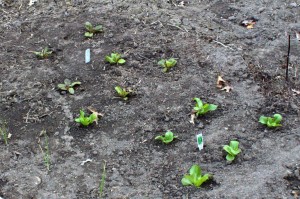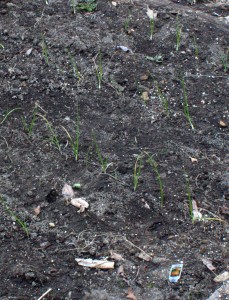Is it cold crops or cole crops? Both terms work, actually. Let me explain.
First of all it’s the beginning of Spring. The Northern Hemisphere of the Earth is waking up slowly from its long winter nap. Birds and animals of all sorts have been wandering near and far to find mates as evidenced by the increasing roadkill we see at this time of year. I think the order is skunks first, then opossums, and raccoons judging by the carnage. 🙁
In the garden Spring starts a little slower than in the animal world. However, there are a number of plants that can take the cold and even grow in low temperatures.
Lettuce and onions have already been planted in our vegetable garden, but they’re not without protection from freezing temperatures. Old sheets to the rescue!
Cold crops would be described as all the plants that do well in the cold. How cold is cold? Just think Spring or Autumn temperatures at the ends of the growing season.
Cole crops are plants who are members of the Mustard Family, Cruciferae, now known as Brassicaceae.
The word cole derives from a Latin word caulis which means stem or stalk. A few of the cole crops even have names derived from the same term: cauliflower, collards, broccoli, kohlrabi, kale. All these guys excel at growing in cool temperatures.
In general leaf and root crops may do ok in the cold, but fruiting crops will have to wait for the warmer weather of summer. Tomatoes and peppers are example plants that need more heat to develop their fruits.
Here’s a list of cold crops separated into types of crops — leaves, roots, coles, and flowers:

